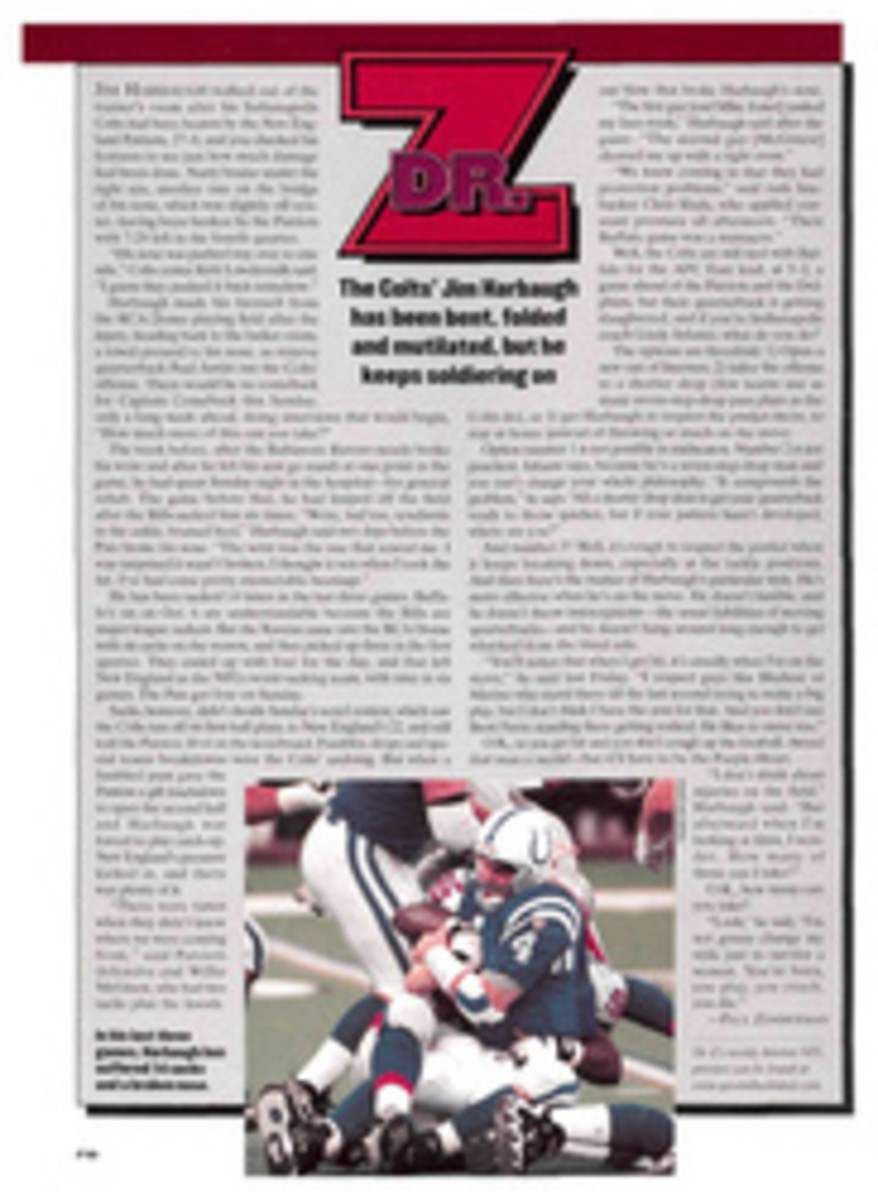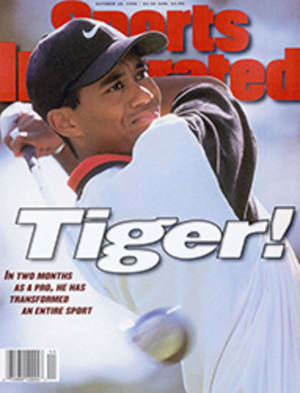
BIG DREAMER RALPH SANCHEZ BUILT A WORLD-CLASS TRACK NEAR MIAMI
You drive down the long, narrow, flat road clotted with crushed
clumps of soil blown off the farms, and for miles you see acres
of lush royal palm nurseries mixed among acres of sandy fields
that yield potatoes and corn. It looks like Illinois transported
to the tropics. You smell the musty, acrid aroma of South
Florida farmland as you keep driving, and then, abruptly, there
it is: the Homestead Motorsports Complex, a racetrack and
towering grandstand rising amid the crops. You wonder who ever
imagined that people would trundle to the sparsely populated tip
of this peninsula to watch a sport better seen on TV?
Ralph Sanchez did. The story of this place begins in 1980, when
Sanchez first dreamed of a big-time car race through the streets
of Miami, his adopted city. Within three years he had created
the Miami Grand Prix. In 1986 he was dreaming again--this time
of a permanent world-class track somewhere in South Florida.
Local officials, including the Dade County commissioner, said it
was impossible, but 10 years later the much-acclaimed
63,000-seat complex in Homestead is about to celebrate its first
anniversary.
"You dream, you paint the picture, then you start to develop the
steps to get to that reality, that pot of gold at the end of the
rainbow," Sanchez says, gesturing from behind his desk at Miami
Motorsports, his race-promotion firm, which is now located at
the speedway. He is a tall, lean, handsome man who talks
passionately about his ideas, his family, his childhood. And
racing. "When you're around me," he says, "you hear one word a
lot--focused. Always stay focused. Keep your eye on the ball."
Emerson Fittipaldi, the two-time Indy 500 winner, says, "I've
known Ralph for 15 years now, and he's always been someone who
thinks big and makes things happen." Sanchez coaxed the former
Formula One world champion out of retirement for the second
Miami Grand Prix. "Most people in race promoting know only half
of what Ralph does," Fittipaldi says.
The dreamer and the doer in Sanchez spring from the wounds of an
impoverished youth. He was born in Sancti Spiritus, Cuba, in
1948 and baptized Rafael Augustin Sanchez. The family lived on a
small farm where young Rafael, fascinated with toy cars, steered
imaginary Ferraris into imaginary victory lanes. It was a
tranquil life.
When Rafael was 10 years old, everything changed. Fidel Castro
seized power, and the Sanchez extended family was split; half
were strongly pro-Communist, half anti-Communist. In Cuba's
towns and in the mountains, revolutionaries and
counterrevolutionaries battled for people's allegiance. And
children often were drawn into the struggle.
"At 12 years old in Cuba, you were already a man," Sanchez says.
"If you went to public schools, it was Communist indoctrination.
If you went to Catholic schools, it was the other way, and you
heard bad things about Castro."
Rafael attended a Catholic school, where the brothers who taught
by day printed subversive leaflets by night. He was secretly
recruited to distribute the flyers and deliver supplies to
opposition forces. It was risky work, and children who were
caught by the police were often thrown into jail. When a
relative warned Rafael's father that the boy was in danger, the
family arranged a seat for Rafael aboard one of the airlifts
from Havana to Miami.
When Rafael landed in the U.S., poor and unable to speak
English, he moved in with an aunt and uncle in Miami. But just
18 months later the couple moved to Nicaragua, and Rafael was
placed in a Catholic orphanage in Miami, where he stayed until
he was required to leave after he turned 18. "When I walked into
that orphanage, I didn't know if I'd ever see my parents again,"
Sanchez remembers. "It was a rough place. You had to learn how
to defend yourself."
The other boys at the home were all Cuban exiles, orphans of the
revolution. But Rafael never really adjusted. He always felt
like an outsider, whether in the orphanage among his fellow
Cubans or in Miami among the Anglos. The sting from that lonely
time is still with him, Sanchez acknowledges.
Eventually his parents, his brother and a grandmother joined him
in Miami, having left Cuba on U.S. freedom flights in 1966 and
'67. They all squeezed into a one-room apartment while Ralph--by
this time most of his friends used the English version of his
name--attended Miami Dade Community College and flipped Royal
Castle burgers to bring in desperately needed money.
"We had doctors' bills. My grandmother was sick," Sanchez says.
"When I tell you we didn't have food to eat, I'm not kidding.
Every time we had to pay the bills, there was uncertainty."
The years of poverty ended after Sanchez earned an accounting
degree from Florida Atlantic University. He had been selling
real estate for two years when he borrowed money to build small
housing projects in Miami. By the time he was 34 he was a
wealthy developer. Then he took a huge risk on one auto race in
Miami. And lost.
After wrestling with reluctant politicians for authorization to
stage a Grand Prix event along the city's streets, Sanchez had
secured the necessary permits for February 1983, in the middle
of Florida's dry season. Dry except the weekend of the race.
Spectators stayed away, the race was cut short by rain, and
Sanchez lost almost $1.3 million of his own money. But he paid
out the entire $250,000 purse to the drivers, who raced only 50
of the scheduled 310 miles. Sanchez was nearly bankrupt, but he
won the everlasting gratitude of the drivers. And despite a
daunting mass of debt, he planned the second Miami Grand Prix.
And prayed.
His wife, Lourdes, apparently prayed more effectively. Right
before Grand Prix II, another storm engulfed Miami. It was worse
than the one of the year before, with water rushing over the
course in a cascade. Another rainout would mean financial
disaster for the family. An exhausted Sanchez fell asleep in a
downtown hotel room as his wife cried. "I will never forget that
afternoon," Lourdes says. "I prayed, 'Oh, God, if this is not
the way for us, let me know. And if it is, give me some sign.
Show us this is the right way.'"
The rain stopped. The clouds parted. The race was run on dry
streets. And to this day Lourdes believes God smiled on her
husband.
She has been married to him for almost 27 years, and they have a
21-year-old daughter, Patricia, who is finishing law school at
Duke University, and an 18-year-old son, Rafael, who has Down's
syndrome. And though Ralph and Lourdes could move in the fast,
exclusive circles of Miami's glitterati, they socialize little,
preferring quiet evenings at home. Lourdes says that Ralph is a
private, nervous man with no truly close friend except her. Over
lunch he swallows pills to control his ulcers. And if he is
outgoing and charming before the TV cameras, inside he remains
the shy orphan from Sancti Spiritus, still an outsider with
something to prove. "There's a lot of kid in him," says Lourdes.
"When you're a very mature person, you're very rational, and you
put obstacles in your own way. But being a little kid, he
doesn't see the obstacles. He only sees the light."
The Homestead Motorsports Complex was constructed despite some
real obstacles, including a prolonged permit-seeking process.
The $82 million track is owned by the city of Homestead--Sanchez
holds a 37-year lease to operate the facility. But everyone
knows it's the Track That Ralph Built, and it's hailed locally
as a miracle that rose from the ruins of Hurricane Andrew. Two
weeks after the storm flattened Homestead on Aug. 24, 1992,
Sanchez and the city manager worked out the details and shook
hands on the deal.
Top drivers such as Fittipaldi and Bobby Rahal have raved about
the track, which sold out for Indy Car's 1996 season opener. Big
crowds have also come for the NASCAR Craftsman truck series and
motorcycle racing. NASCAR Busch Grand National and Indy Car
events are scheduled at Homestead for this fall and winter, and
the track has become a popular site for club races. The Skip
Barber Racing School holds classes and races at Homestead.
Sanchez also envisions attracting the Winston Cup and the
Formula One World Championship.
As you drive away from Homestead, a South Florida sunset glows
golden behind a dramatic arc of storm clouds that skirt the
track, carrying the autumn rain somewhere else. You wonder if
God really does smile on Ralph Sanchez.
Bob Knotts, a freelancer from Fort Lauderdale, is a former skier
who now races Formula Fords.
COLOR PHOTO: BILL FRAKES Sanchez opened his gleaming new racetrack in 1995, three years after Andrew battered Homestead. [Ralph Sanchez on racetrack]
RICHARD E. ARGUELLO Fittipaldi (right) drove in Sanchez's second Miami Grand Prix.[Ralph Sanchez and Emerson Fittipaldi]

